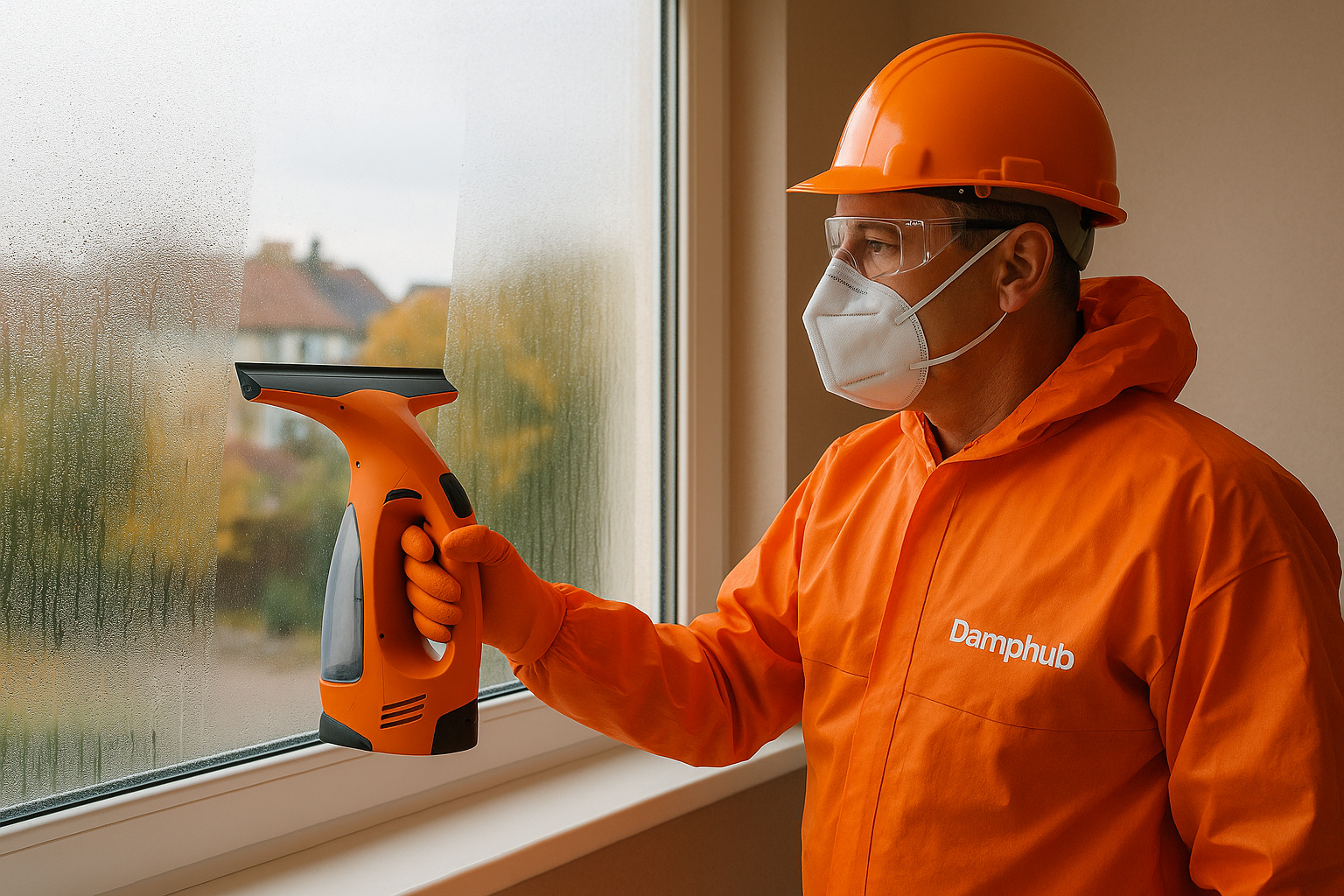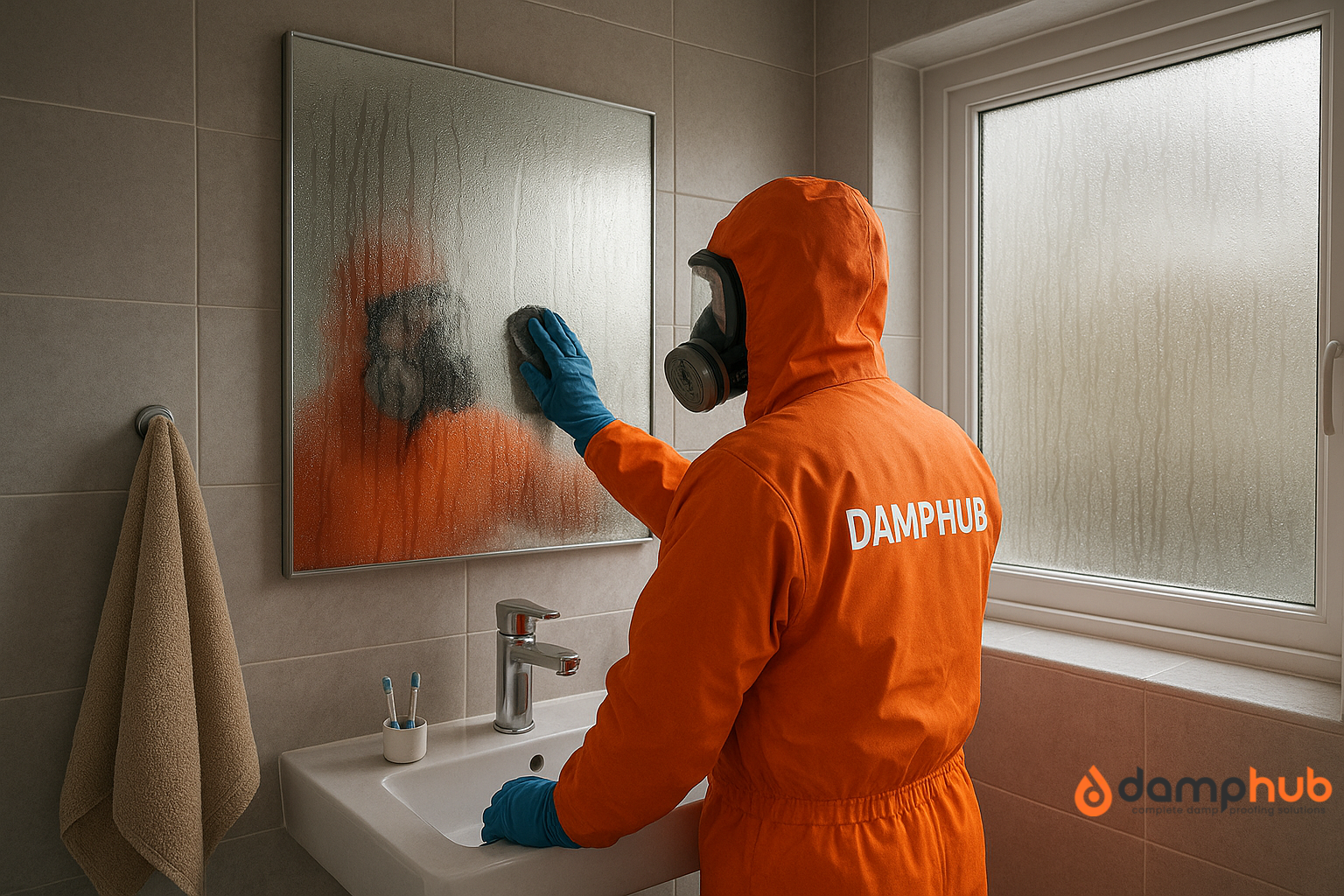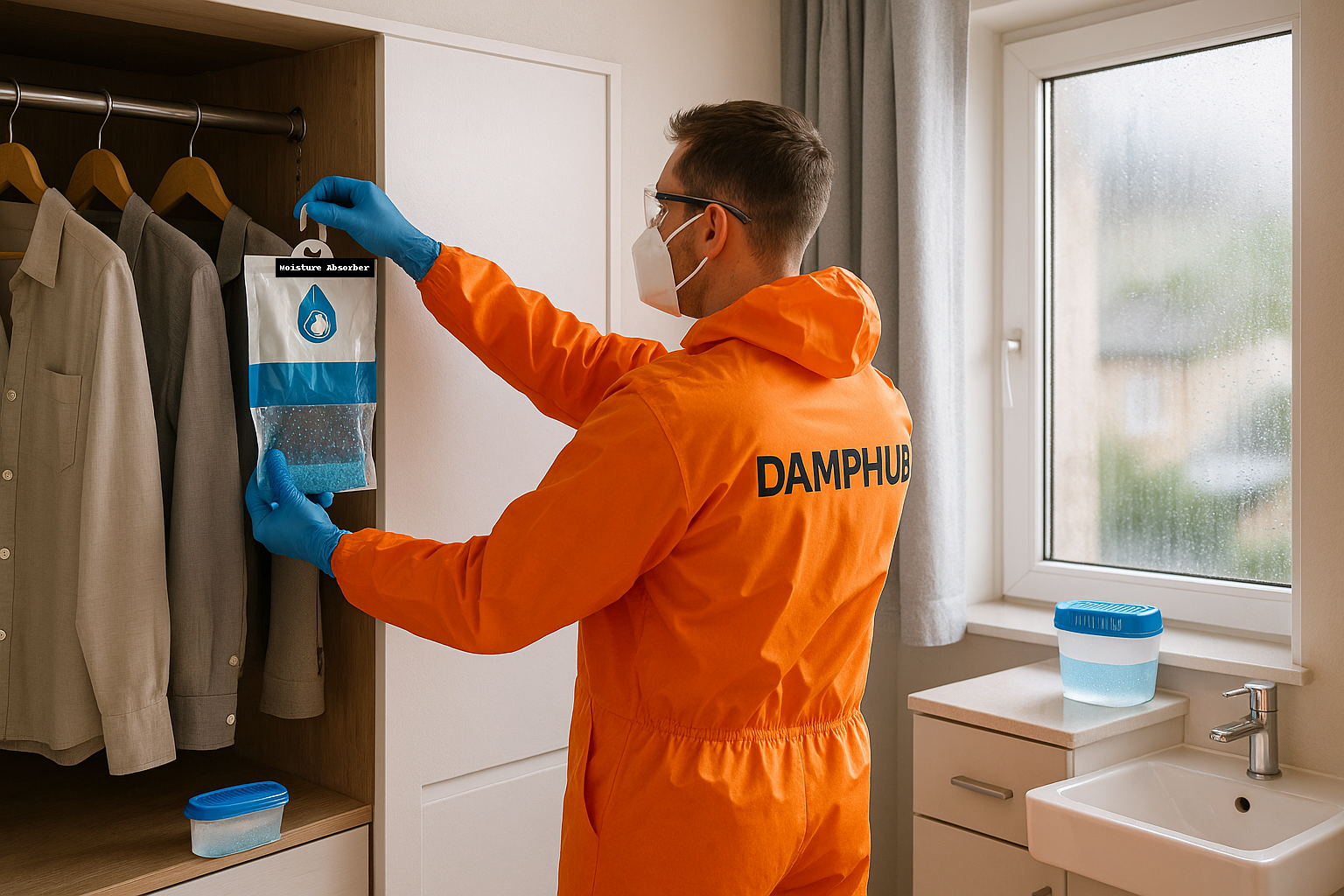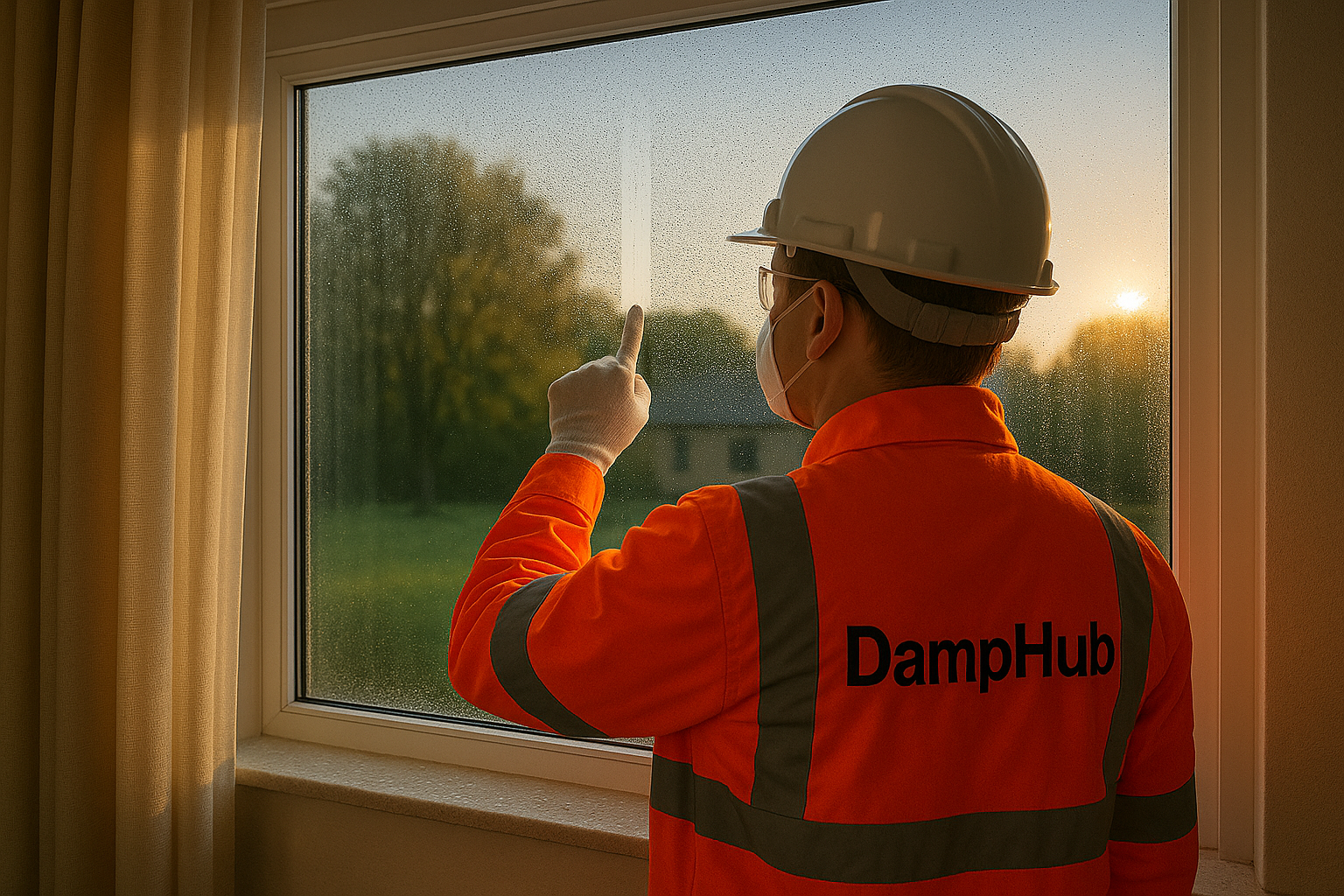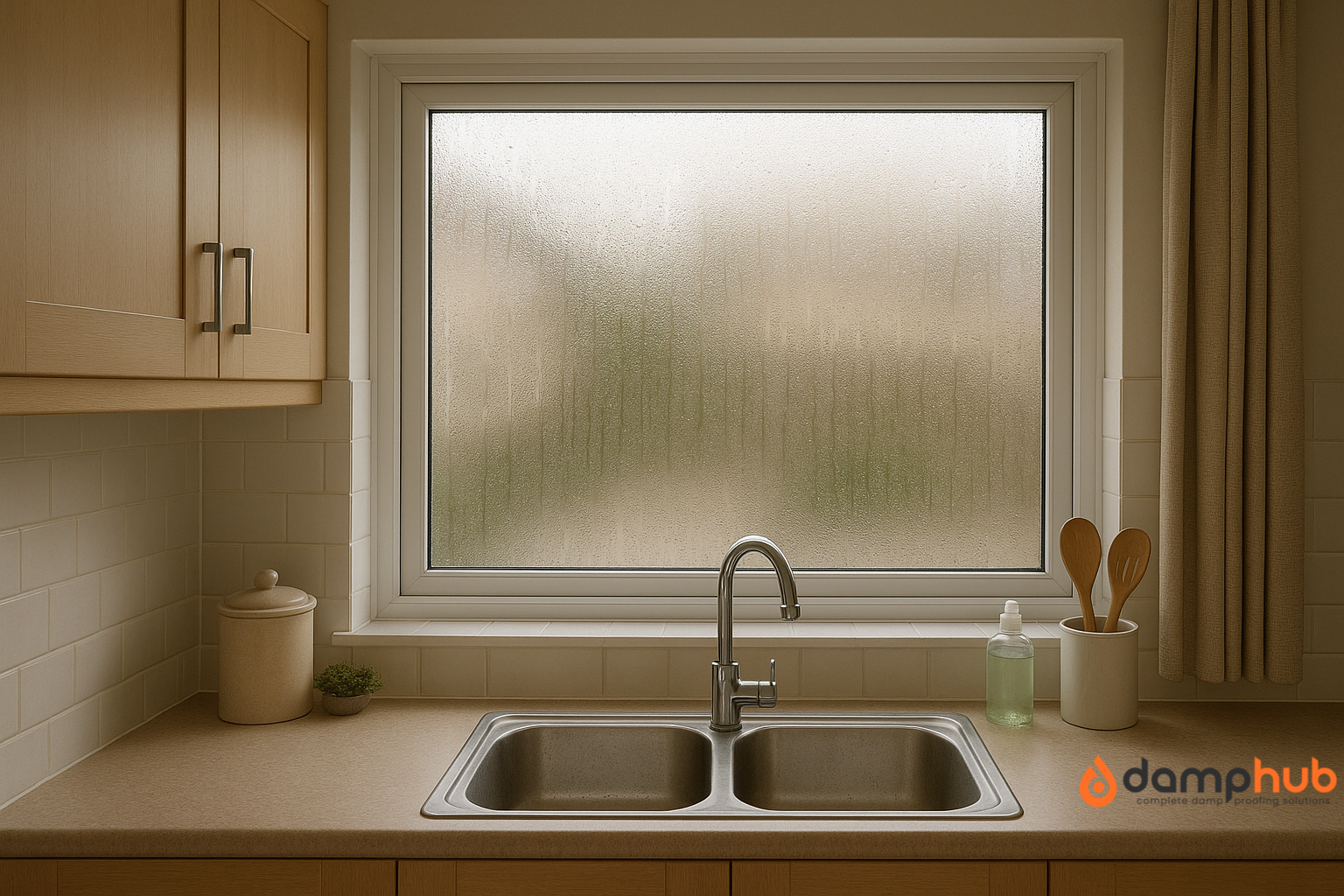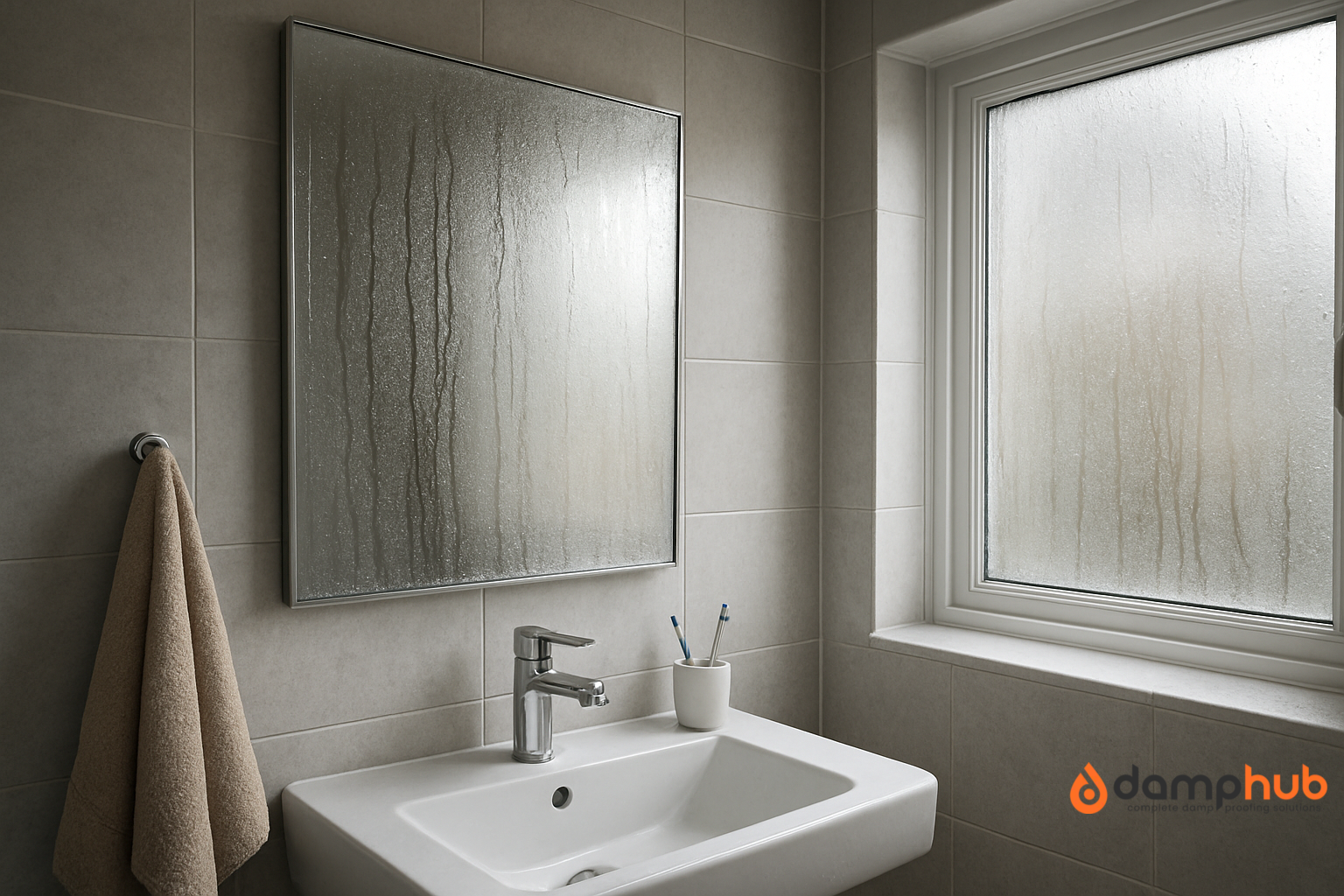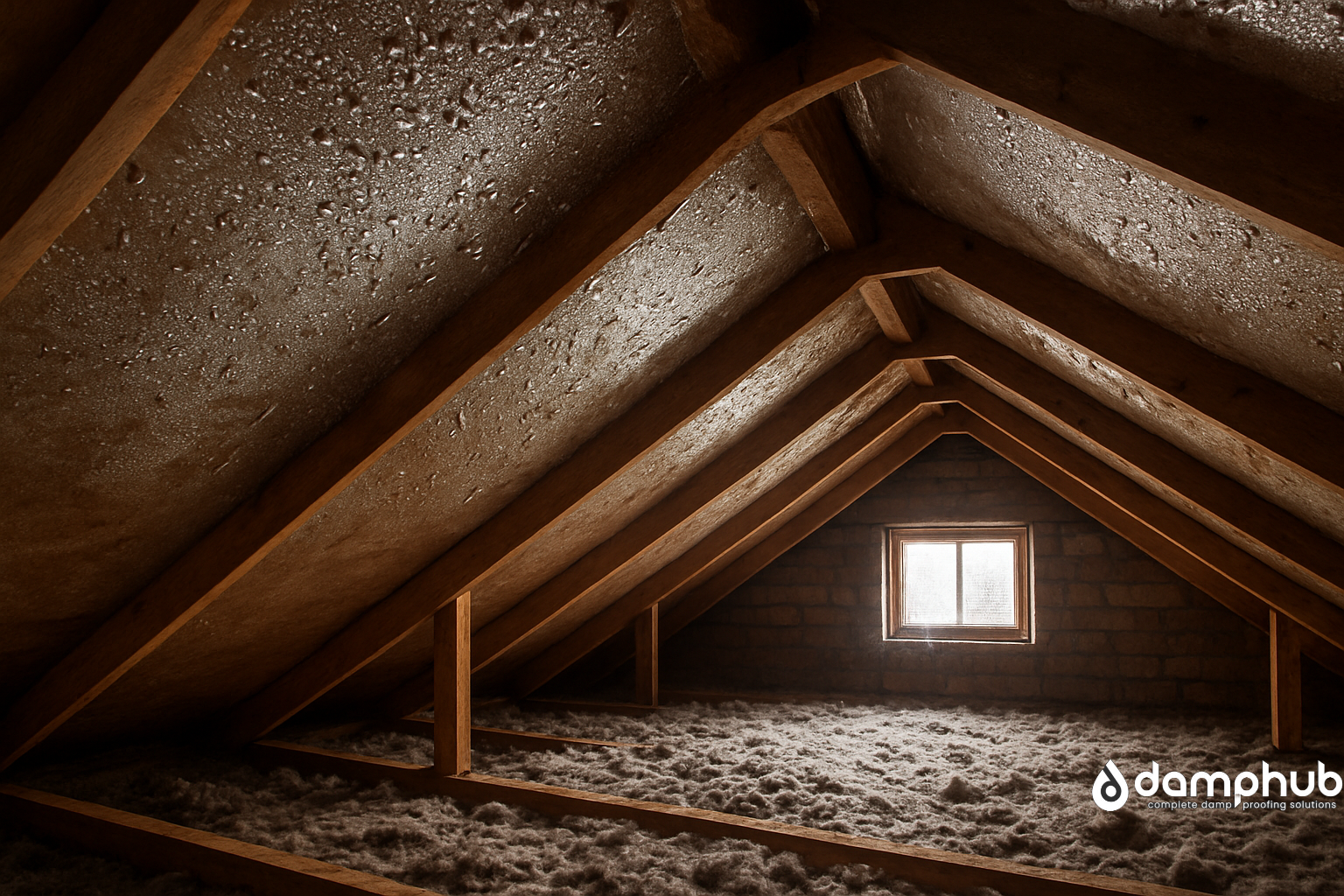
Pop your head through the loft hatch on a cold January morning, and what do you see? For a lot of UK homeowners, the answer is shiny damp patches on roofing felt, beads of water clinging to nails, or insulation that feels just that little bit clammy. That, in plain terms, is condensation in loft spaces.
It sneaks up quietly, doesn’t make obvious signs, and often gets ignored because, well, it’s only the loft, right? But here’s the catch: left alone, that moisture doesn’t just vanish. It lingers, breeds mould, weakens timbers, and slowly chips away at the health of your roof. By the time you notice it dripping onto stored boxes or staining bedroom ceilings, you’ve got a repair bill nobody wants.
The good news? Condensation in the loft isn’t a mystery. Once you understand why it happens, the fixes are pretty straightforward. Let’s break it down step by step.
Can You Get Condensation in the Loft?
Yes, you absolutely can. In fact, it’s one of the most common damp issues in UK homes. Warm air from your kitchen, bathroom, and even just breathing (we all pump out moisture whether we like it or not) rises. If your loft doesn’t have a way to breathe, all that moisture gets trapped.
Now, lofts are colder than the rooms below. So the minute that warm, damp air hits a chilly surface—your roofing felt, rafters, or nails—it cools and turns into liquid. That’s the condensation you see.
You’ll often spot it as:
- Droplets on roofing felt
- Water beads on metal fixings
- Damp insulation
- Even little black mould spots spreading on timbers
For some people, the first clue is even stranger: cardboard boxes gone soft, Christmas decorations that smell musty, or insulation sagging like it’s been sat in a puddle.
So yes, condensation in loft areas isn’t just possible, it’s expected in a poorly ventilated roof space.
Our other related article you may want to read: Condensation on Outside of Windows: What It Really Means for Your Home
Is Condensation in Loft Normal?
This is where things get a bit tricky. Some homeowners see a little misting and shrug it off. And technically, a tiny bit of moisture on really cold days can be “normal.” But here’s the truth: persistent condensation in loft spaces is not something you should ignore.
Think of it like condensation inside your car windscreen. Sure, it happens on cold mornings, but if it’s there every day, soaking the seats, you know something’s wrong. The same goes for your loft.
Occasional dampness during a cold snap? Fine. Pools of water dripping, mould climbing timbers, or insulation permanently damp? That’s not normal. It’s a sign your loft can’t breathe.
And when the loft can’t breathe, the structure suffers. Timber rots. Felt degrades. Insulation slumps and loses its effectiveness. Left long enough, you’re looking at real damage.
There’s also a health angle. Mould spores from a damp loft can make their way into living spaces below, irritating asthma, allergies, or simply making a house smell “off.” That’s another reason not to dismiss it as harmless.
What Causes Condensation in Loft?
Let’s get straight to it: condensation in lofts happens because warm, moist air meets a cold, unventilated space. But what makes it worse in some homes than others?
Here are the big culprits:
Poor ventilation
Older houses used to have plenty of natural draughts in the roof. Modern builds, with their push for airtight energy efficiency, often choke that airflow. Without vents, moisture has nowhere to go.
A common sight is soffit vents painted over or blocked by insulation rolls. Air should travel freely from one side of your roof to the other. If it can’t, moisture builds up like steam in a sealed bathroom.
Insulation mishaps
Loft insulation is essential, but it has to be installed properly. If it’s blocking eaves, you’re cutting off vital airflow. If it’s patchy, warm air sneaks through in uneven spots, creating cold bridges where condensation collects.
It’s not uncommon to see “damp stripes” across insulation where warm air has crept through gaps.
Moisture from below
Showers, kettles boiling, tumble dryers running—everyday life pumps litres of moisture into your home. If extractor fans are weak or not venting properly, that damp air heads straight up into the loft.
A tell-tale giveaway? A bathroom directly beneath the loft with no fan, or one that just recirculates steam instead of venting outside.
Breathless roofing felt
Older non-breathable felt traps condensation on the underside. Modern breathable membranes solve this, but many roofs still have the older type. If yours does, you’re fighting an uphill battle without added ventilation.
Blocked vents and soffits
Birds’ nests, insulation shoved into eaves, or even cobweb build-up can choke airflow. It sounds minor, but even a few blocked gaps can upset the balance.
Put all that together, and you’ve got a recipe for a loft that’s damp all winter.
Want to reach more? We also have a guide on Condensation Inside Windows: What It Means & How To Fix It
How to Dry Out Condensation in Loft
Say you’ve gone up there and found damp insulation, dripping nails, and patches of mould. What do you do first? Dry it out. You can’t fix what you can’t see, and you certainly don’t want to seal moisture in.
Here’s how to get started:
- Open up airflow – Check vents, clear soffits, and if need be, leave the loft hatch cracked open for a few days to encourage movement.
- Temporary dehumidifier – A portable dehumidifier can suck out excess moisture. Handy for a quick dry, though not a permanent fix.
- Replace wet insulation – Insulation that’s been wet loses effectiveness and can harbour mould. If it’s soaked, swap it out.
- Absorbent tubs – Small moisture traps can help in tucked-away corners. Not a fix, but they’ll buy you time.
- Safe mould cleanup – If you see black mould starting, use a mould spray designed for timber. Wear a mask and gloves, and don’t just paint over it.
Pro Tip
If you’re running a dehumidifier in the loft, set it up on a bit of a raised board. It keeps the airflow moving beneath, avoids tipping, and stops it from sinking into insulation.
Also worth saying: make sure what you’re seeing really is condensation. Sometimes a roof leak can look similar, but leaks tend to leave clear tracks or drip in specific places after rain. Condensation usually spreads more evenly across cold surfaces.
How to Stop Condensation in Loft
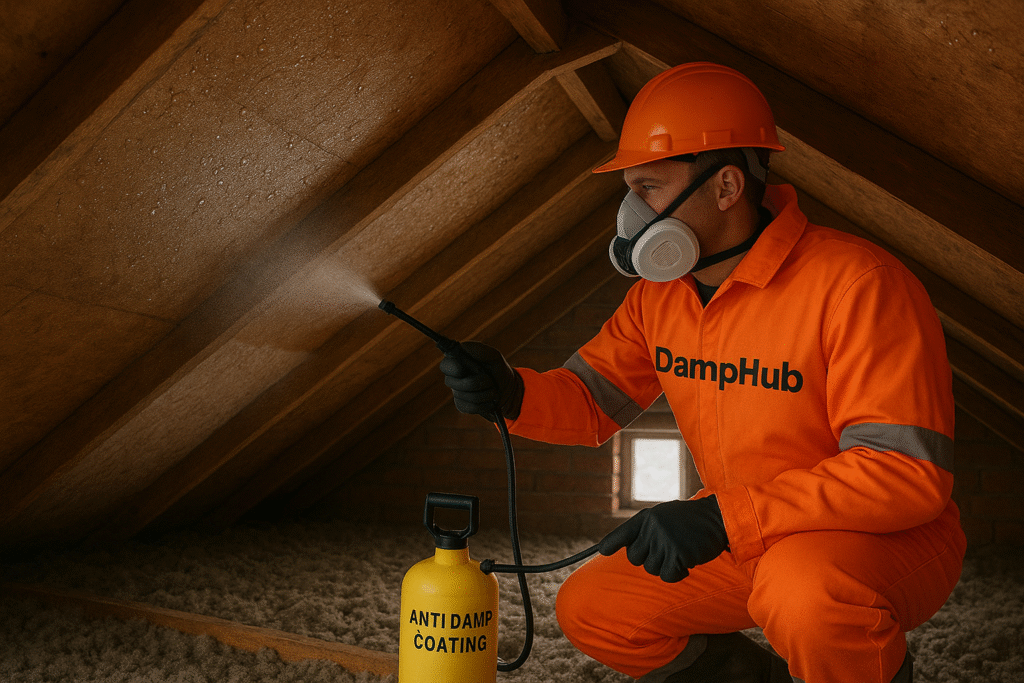
Here’s the real meat: preventing it from coming back. Drying is step one, but prevention keeps your loft sound for the long haul.
Ventilation, ventilation, ventilation
Add soffit vents, ridge vents, or even tile vents. The best system uses a mix—air in at the eaves, air out at the ridge. That keeps a steady flow across the roof space.
Sort out bathroom and kitchen fans
One of the biggest causes of loft condensation is steam from showers or cooking venting into the roof. Check ducting goes outside, not into the loft. Repair leaks and upgrade weak fans.
Lay insulation properly
Loft insulation should stop before the eaves to keep airflow clear. Add baffles or spacers if needed to keep that gap open.
Upgrade to breathable felt
If you’re reroofing, don’t waste the opportunity. Breathable membranes let moisture escape without letting rain in.
Regular maintenance
Clear gutters, check for slipped tiles, and make sure nothing external is causing water to creep in and worsen condensation.
Try This
On frosty mornings, head up to the loft for a quick check. If you see nails with water droplets, that’s an early sign of condensation. Spotting it now saves you from nasty surprises later in the season.
You may want to explore: How To Stop Condensation on Windows. A Full UK Home Guide
Final Thoughts
Condensation in loft spaces isn’t something to shrug off. Sure, it might start as a few droplets on a nail or a bit of damp insulation, but given time, it can spiral into rot, mould, and costly repairs.
The fix, thankfully, is usually straightforward: better airflow, correct insulation, and a bit of regular checking. Think of your loft as the lungs of your home. If it can breathe, it stays dry.
So next time you’re up there moving boxes or checking insulation, keep an eye out for the signs. A damp loft doesn’t have to be the beginning of a headache. Tackle it early, give it space to breathe, and you’ll save yourself a lot of grief down the line.
Answering Common Questions About Condensation in Loft

-
Is it worth putting a dehumidifier in the loft?
Yes, but only as a stopgap. A dehumidifier will dry things out, but it doesn’t solve poor airflow. Without proper ventilation, the problem comes back as soon as you turn it off.
-
What should the humidity be in a loft?
Ideally, below 60% relative humidity. Anything higher for long stretches encourages condensation, mould, and timber decay.
-
Can condensation in loft cause mould?
Absolutely. Timbers, insulation, and roofing felt all provide a home for mould once they’re damp. Mould spreads fast and releases spores, which can even seep into living areas below.
-
Does loft condensation go away in summer?
Often, yes—warmer temperatures and drier air mean less visible condensation. But if ventilation is poor, the issue will return every winter. Summer just hides the problem for a while.
-
Can condensation damage roof timbers?
Yes, and this is the serious bit. Persistent dampness leads to wet rot, which weakens beams and rafters. Left unchecked, condensation in loft spaces can compromise the structural strength of your roof.

